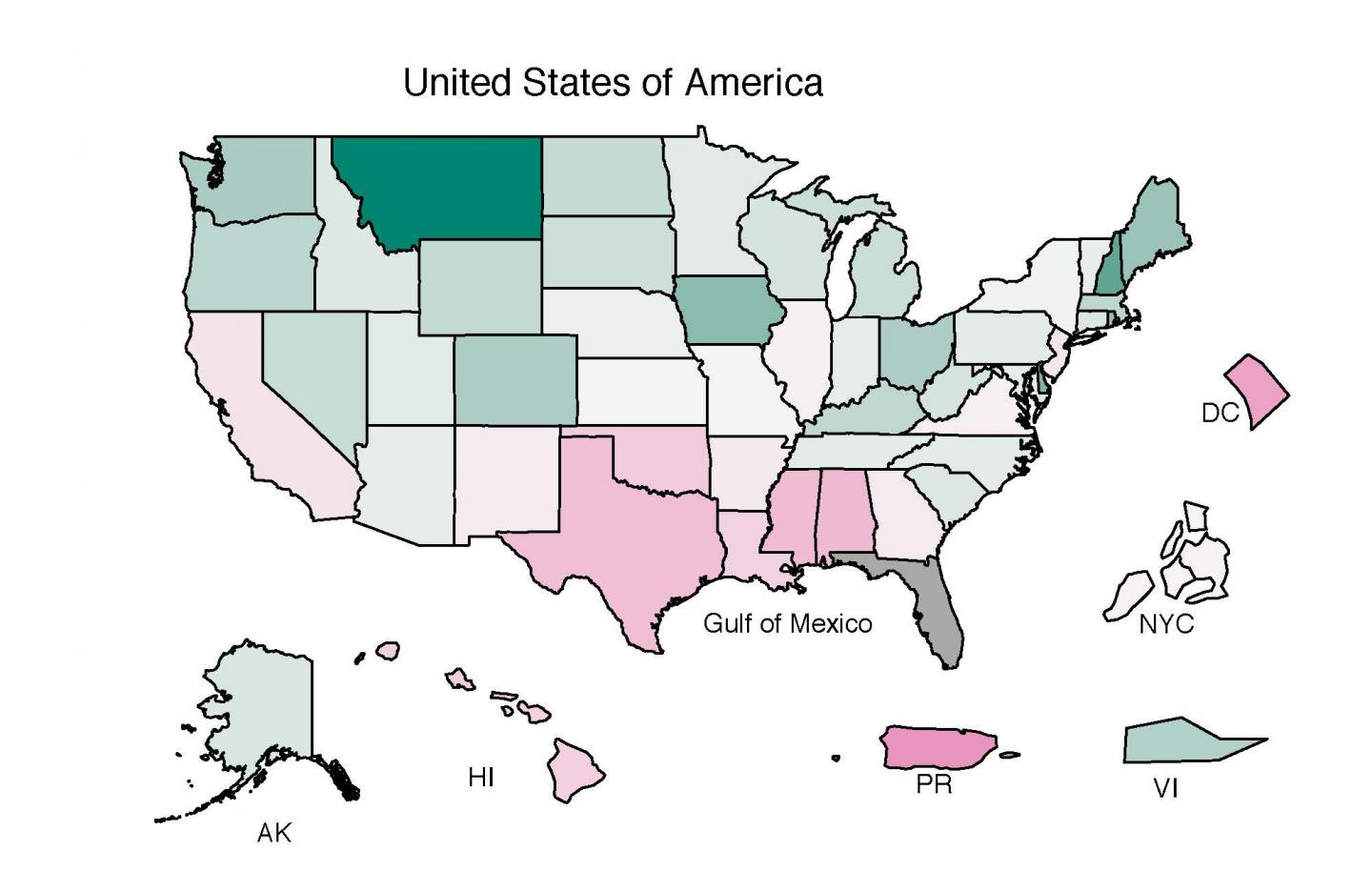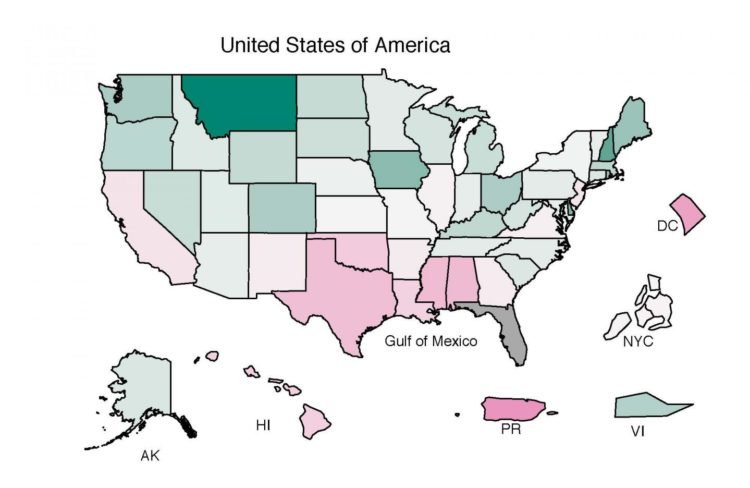‘Dante’ beat 23 others in predicting the timing, peak, and short-term intensity of the unfolding 2018-2019 flu season. Enhanced version takes aim at 2019-2020.

Credit: Los Alamos National Laboratory
LOS ALAMOS, N.M., October 22, 2019–A probabilistic artificial intelligence computer model developed at Los Alamos National Laboratory provided the most accurate state, national, and regional forecasts of the flu in 2018, beating 23 other teams in the Centers for Disease Control and Prevention’s FluSight Challenge. The CDC announced the results last week.
“Accurately forecasting diseases is similar to weather forecasting in that you need to feed computer models large amounts of data so they can ‘learn’ trends,” said Dave Osthus, a statistician at Los Alamos and developer of the computer model, Dante. “But it’s very different because disease spread depends on daily choices humans make in their behavior–such as travel, hand-washing, riding public transportation, interacting with the healthcare system, among other things. Those are very difficult to predict.”
The FluSight Challenge aims to improve accurate flu forecasting by challenging scientific institutions to develop predictive computer models. During the 2018-2019 flu season, 24 different teams participated in the flu forecasting initiative, each submitting 38 different weekly forecasts.
Dante proved more successful than the other models in predicting the timing, peak, and short-term intensity of the unfolding flu season. Unlike other models, Dante is a multi-scale model, meaning it combines national, regional, and state flu data. By averaging the trends across those different geographies, it uses information from individual states to improve other states’ forecasts.
Each week from mid-October to mid-May, Osthus submitted a file to the CDC that described Dante’s forecasts for the entire flu season. “Submitting each week of the season allows forecasters to update their forecasts in light of current data–similar to how, for instance, hurricane forecasts are updated as the hurricane is unfolding,” he said.
New data for the flu season are collected each week and integrated into the forecasting models. Dante proved particularly useful for forecasting at the local level, something that is, according to Osthus, “accompanied with significant data challenges.”
For this flu season, Osthus plans to submit Dante+, an updated version of Dante that will include internet-based “nowcasting,” which develops and uses a model that maps Google search traffic for flu-related terms onto official flu activity data.
As for what Osthus predicts for this year’s flu season, it’s hard to say. “Flu forecasts this early in the season are marked by significant uncertainty,” he said. “The flu season doesn’t usually start to reveal itself until after Thanksgiving. There is nothing, at this point, to suggest a highly unusual flu season, meaning it is likely to peak between mid-December and late March. As far as the intensity of the flu season, however, it’s just too early to tell.”
Kelly Moran (a Ph.D. student at Duke University and, at the time, a visiting guest student scientist at Los Alamos) contributed to the validation of Dante. The second-place model, DBM+, was also developed at Los Alamos with the help of Reid Priedhorsky, Ashlynn Daughton (a Ph.D. student at University of Colorado Boulder), Sara Del Valle, and Jim Gattiker. The Dante paper can be viewed here: https:/
###
About Los Alamos National Laboratory
Los Alamos National Laboratory, a multidisciplinary research institution engaged in strategic science on behalf of national security, is operated by Triad, a public service oriented, national security science organization equally owned by its three founding members: Battelle Memorial Institute (Battelle), the Texas A&M University System (TAMUS), and the Regents of the University of California (UC) for the Department of Energy’s National Nuclear Security Administration.
Los Alamos enhances national security by ensuring the safety and reliability of the U.S. nuclear stockpile, developing technologies to reduce threats from weapons of mass destruction, and solving problems related to energy, environment, infrastructure, health, and global security concerns.
Media Contact
Laura Mullane
[email protected]
505-667-6012





